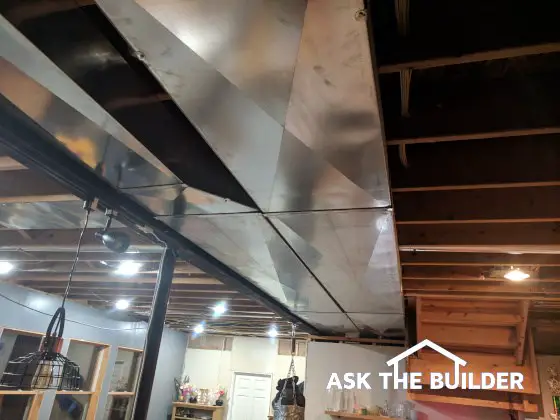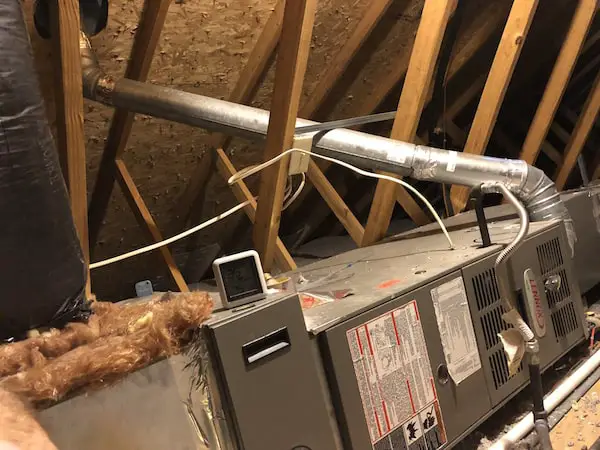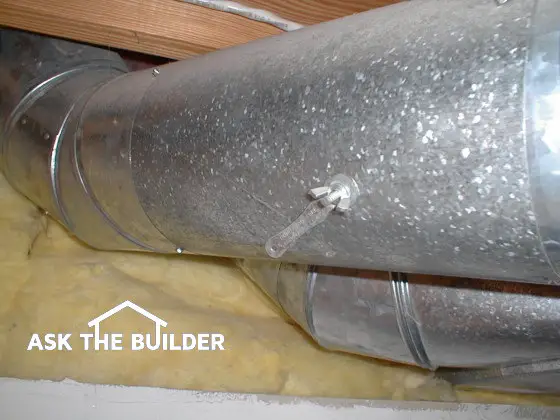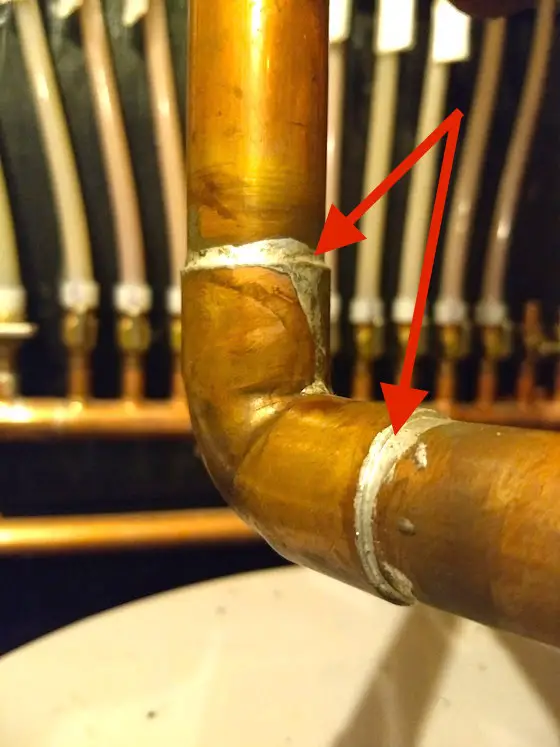Resilient Flooring Materials
Sheet Vinyl, Vinyl Tile, Cork, & Rubber
Modern vinyl resilient flooring bears very little resemblance to the 'linoleum' of old. Linoleum, years ago, was made using canvas or burlap as a base material. Cork and wood dust was often pigmented and used for creating patterns. The final process then coated these materials with a solidified linseed oil and gum mixture.
Resilient floorings today incorporate a wide range of materials which make them far more durable and bouncy than the old 'linoleum'. Resilient floorings are available in several forms. The first choice for many individuals is sheet vinyl flooring. This material is manufactured in large pieces up to 12 feet wide. It comes in large rolls.
Another form of resilient flooring is vinyl tile. These tiles are usually available in 12" x 12" squares. Vinyl tiles are often used in areas which will receive extremely heavy foot traffic. They have excellent durability characteristics.
Cork flooring and rubber flooring are also alternative choices. Both of these materials perform well as flooring. Cork has been used for years in many commercial buildings such as libraries and churches. Rubber flooring is used commercially as well. It has a unique characteristic. When it gets wet, it usually is not slippery!
Plastic Flooring
Virtually everyone knows how durable plastic can be. Some plastics resist breakdown for hundreds of years. Poly-vinyl chloride (PVC) is one of these plastics. Plumbing and sewer pipes are made from this material, because we expect long useful lives from them. Resilient floorings also incorporate PVC in the manufacturing process.
The most important part of a sheet vinyl resilient flooring is the part you walk on. It is the top layer. This top layer is often referred to as the 'wearlayer'. Many high quality manufacturers use clear PVC plastics as their 'wearlayers'. The use of PVC as a wearlayer offers another distinct advantage. PVC plastics have the ability to be glued and welded together into one piece using special cements. These glues or cements actually soften the PVC molecules and allow the PVC molecules from two different pieces of material to interlock with one another as the cement or glue dries. This is important, in the event that your sheet vinyl floor requires that two pieces be seamed together. The special glues actually create one solid floor!
Thickness is Everything
It is extremely important to realize that the PVC wearlayers are available in different thicknesses. The thickness of the wearlayer can differ by as much as 500%!!!! That is an incredible difference. Usually, the products with the thicker wearlayer will cost more. The wearlayer thickness can be as thin as 0.005 inch or as thick as 0.025 inch. This is an important consideration. A thinner layer will be more susceptible to damage. Remember, the color and pattern of a sheet vinyl floor is protected by the wearlayer. If the wearlayer is deeply scratched or becomes worn, the color and pattern can and will become damaged beyond repair.
A distinct advantage to sheet vinyl flooring is its waterproof quality. Water which lays on top of the wearlayer will not harm the floor. Only when water is allowed to get underneath the flooring can it create a problem. Damp mopping will not harm a sheet vinyl floor, however, if you flood the floor and water seeps under the edges, or a seam is not properly glued, you can have a serious problem. Be sure that you do not use massive amounts of water when cleaning. If you flood your flooring with water, the water may flow to an edge and get beneath the flooring. This can cause the glue to fail in some instances.
Blacktop and Sheet Vinyl
If you have an asphalt or blacktop driveway, BEWARE! Asphalt is a product of crude oil, which we all know is black in color. When you walk across an asphalt surface small amounts of oil are picked up by your shoes. If you then walk onto a sheet vinyl floor, this oil is deposited onto the PVC wearlayer. This oil can permanently stain some vinyl floorings. Certain manufactures claim to have sheet vinyl PVC wearlayers that resist these stains.
If you have an older sheet vinyl floor, you very likely can see distinctive yellow paths where you commonly walk across the floor. In the past, many people associated this problem with wax buildup on the flooring. While the waxes will yellow, no one ever seemed to be able to explain the extra deep yellowing in the traffic areas! So, if you have an asphalt drive, I suggest you get in the habit of removing your shoes as soon as you enter the house. No matter what you walk on, you will be depositing the oil from the driveway onto something.
High gloss finishes available on both sheet vinyl flooring and vinyl tiles are accomplished by factory applied layers of urethane. These urethanes are not that different from urethanes that are used on hardwood flooring. These coatings, just like any other coating, can be damaged. The high gloss finishes will more readily show scratches or scuffs. Many manufactures make specific floor care products and coatings which will allow you to easily maintain these surfaces. As with anything, you must religiously follow directions to obtain the best results.
Manufacturers of Sheet Vinyl & Vinyl Tile Products
The following is a listing of several manufacturers who make a variety of sheet vinyl and vinyl tile flooring products. I suggest that you call them as soon as possible and request product literature. All of them will be glad to send it to you. Many of them will also produce a list of local suppliers who carry their products. Several of the manufacturers have wonderful floor 'maintenance and care' pamphlets.
- Armstrong World Industries
717-397-0611
www.armstrong.com
Vinyl Tile & Sheet Vinyl - Azrok Industries
210-558-6400
Vinyl tile - Congoleum Corporation
800-274-3266,
www.congoleum.com
Vinyl Tile & Sheet Vinyl - Flexco Company
800-633-3151
www.flexcofloors.com
Vinyl tile - Mannington Mills, Inc.
856-935-3000
www.mannington.com
Vinyl tile & Sheet Vinyl
Sheet Vinyl and Vinyl Tile Floor Maintenance and Care
Immediately after Installation: Do not disturb seams which have been glued for at least 16 hours. Keep traffic to a minimum for at least two days to allow adhesives plenty of time to 'set' or harden. Use care in placing furniture and appliances. Heavy items can scar and indent the flooring permanently!!
Regular Maintenance: You must vacuum or sweep on a very regular basis to maintain the crisp reflective surface of the wearlayer. Dirt, sand, etc. which is walked on will scratch these surfaces! Once scratched, it may be impossible to buff out! Simply dust mop or vacuum on a regular basis, as it only takes a few minutes. When washing the floor, use the recommended and approved cleaners suggested by the manufacturer. Other soaps or cleaning agents may leave a residue that attracts dirt or dulls the wearlayer surface!
Periodic Polishing: If you must or want to polish your floor, do so only with approved polishes. Do not trust the labels of products you see in grocery or other stores. Only use polishes recommended by the manufacturers. The reason is simple. Non approved polishes may have chemicals that will harm the wearlayer of your flooring!! Once harmed, you may not be able to restore its luster. Always follow directions to the letter. You will obtain the best results when you follow the directions. If you need to strip previously applied polishing compounds, only use approved strippers!!!
Tips: Use nonstaining floor protectors under furniture legs. Wipe up spills promptly, as some drinks and liquids may contain pigments which can stain the wearlayer! If you have an asphalt driveway use only acrylic based driveway sealing compounds. This will minimize staining, but NOT totally eliminate the possibility of stains! Some carpet dyes can stain the wearlayers. Be careful of after market dyes or inexpensive carpeting! Floors can be harmed by direct, intensive sunlight. Draw shades or blinds during peak periods of sunlight!! Sustained 120 degree heat can also discolor or fade flooring as well. Any heat source should be watched closely.
Manufacturers of Cork & Rubber Flooring
CORK
- Dodge - Regupol, Inc.
717-295-3400
www.regupol.com - Expanko Cork Co.
800-345-6202
www.expanko.com - Wicander Enterprises, Inc.
410-553-6062
www.wicanders.com
RUBBER
- American Floor Products Company, Inc.
800-342-0424
www.afco-usa.com/ - Johnsonite
800-899-8916
www.johnsonite.com - Musson Rubber Co.
800-321-2381
www.mussonrubber.com - RB Rubber Products
800-525-5530
www.rbrubber.com
Column B13



